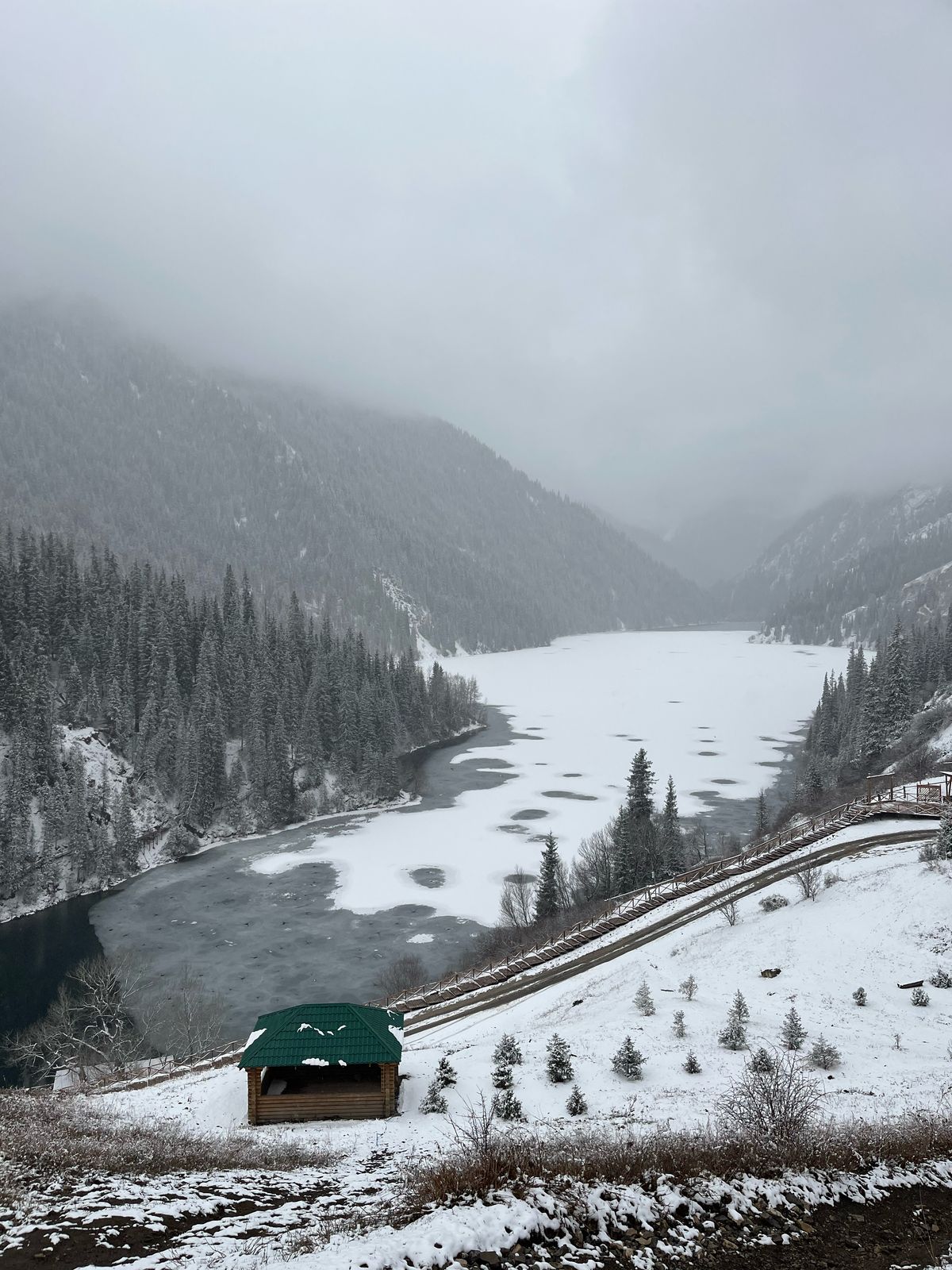Kolsay Lake, nestled in the Tian Shan mountains of Kazakhstan, takes on a unique appearance in winter. The lake, usually a deep blue in warmer months, freezes partially, leaving a striking contrast between ice and water. We trekked down the wooden stairs leading to the lake, stepping carefully where the surface was half-frozen. The ice had formed intricate patterns, while the remaining water reflected the overcast sky. The air was crisp, and the silence was broken only by the occasional crack of shifting ice. It was a quiet, almost surreal experience, standing at the edge where solid met liquid, watching the slow movement beneath the frozen layer.

The walk along the trees lining the lake added to the experience. Snow-covered pines stood tall, their branches weighed down by the winter’s touch. The path was narrow, with occasional clearings offering unobstructed views of the frozen expanse. The stillness of the scene made it easy to lose track of time. There were no crowds, just the occasional traveler stopping to take in the view. The cold was sharp but manageable, especially with layers and the knowledge that a warm drink awaited later. The combination of frozen lake, snow-laden trees, and mountain backdrop created a scene worth absorbing slowly.
Sipping hot coffee while gazing at Kolsay Lake in winter is an experience that lingers. The steam from the cup rose in the cold air, adding to the quiet pleasure of the moment. The lake’s surface, partly frozen and partly liquid, changed subtly as the light shifted. Shadows from the surrounding peaks stretched across the ice, creating shifting patterns. It was the kind of place where time felt irrelevant—where sitting for hours, just watching, seemed entirely reasonable. The simplicity of the moment, with no need for conversation or activity, was its own kind of luxury.
For those who enjoy cold, quiet places, Kolsay Lake in winter is worth the visit. The trek down to the lake is short but rewarding, and the walk along the trees provides enough movement to stay warm. The frozen-and-thawed state of the water makes it visually interesting, different from both fully frozen lakes and those untouched by ice. It’s a place that doesn’t demand excitement but offers stillness instead. If given the chance, returning with a thermos of coffee and no schedule would be the best way to experience it.
